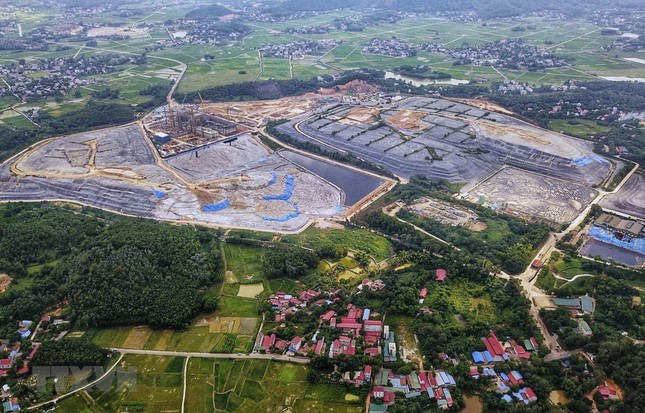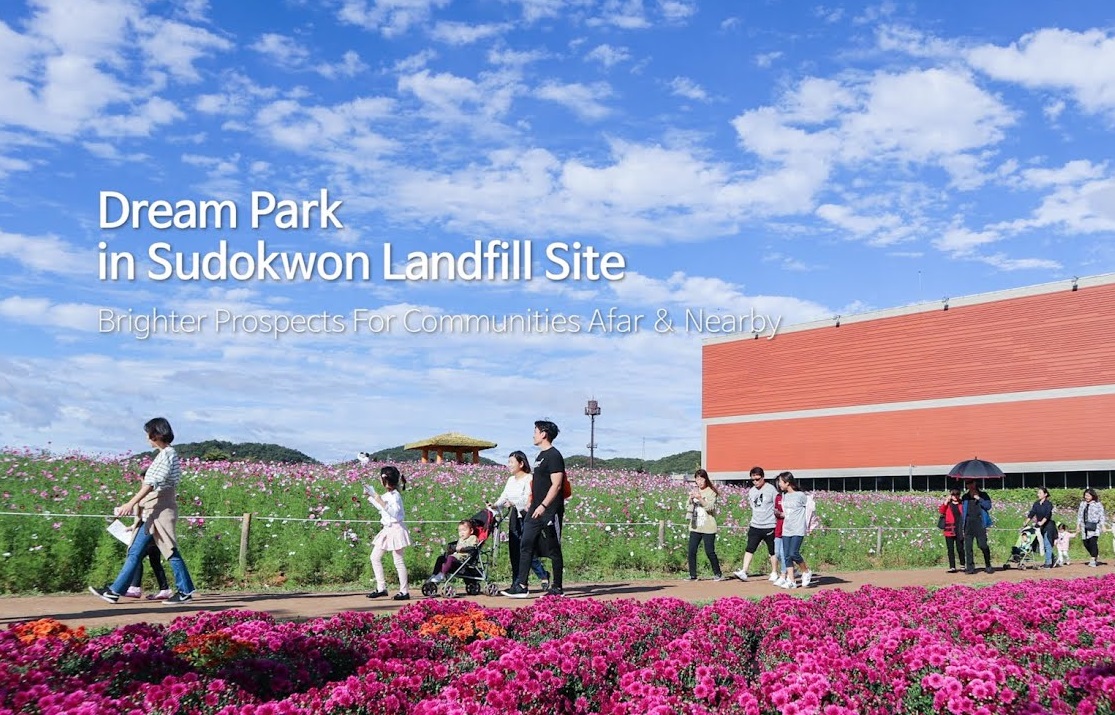Hanoi’s Largest Landfill to Be Transformed into a Park
During a recent meeting between Hanoi People’s Committee Chairman Tran Sy Thanh and National Assembly delegates ahead of a mid-year session, local residents raised concerns about environmental pollution at the Nam Son landfill.
In response, Hanoi Department of Natural Resources and Environment Director Le Thanh Nam stated that the city has implemented various preferential policies and invested in technical infrastructure to improve the quality of life for residents living near the Nam Son landfill. According to him, once new plants become operational, daily waste disposal will be effectively addressed. Additionally, the city plans to treat all previously landfilled waste.
“When these tasks are completed, the landfill’s environment will be similar to a park, becoming a check-in spot and a showcase for the city’s environmental treatment technology,” Nam was quoted as saying by the Cong An newspaper.
The Hanoi government is currently constructing an additional waste treatment facility at the Nam Son landfill, in addition to the existing Thien Y waste treatment plant. With the goal of converting the landfill into a park, Hanoi People’s Committee Chairman Tran Sy Thanh has instructed the Department of Natural Resources and Environment to promptly propose a plan for waste extraction and conduct bidding procedures to find a suitable contractor to receive and process the waste. “Within the next 5 to 7 years, all landfilled waste must be completely treated,” Thanh was quoted as saying at the meeting with voters by VnExpress.

Future park design over the Nam Son landfill area. Illustrative photo using AI ChatGPT application
This is not the first time that the head of the Hanoi government has mentioned the idea of “turning landfills into parks.” In late September 2023, also during a meeting with voters in Soc Son district before the 6th session of the 15th National Assembly, Nguyen Sy Thanh reported that several investors are interested in removing all old waste buried in the Nam Son landfill for incineration, and subsequently transforming the land into a park.
The Chairman of the City People’s Committee also pledged to voters: “No matter how difficult it is, we must do it,” Thanh was quoted as saying by Nguoi Lao Dong newspaper.
Overview of Hanoi’s Largest Landfill
The Nam Son landfill, established in 1996, has undergone several upgrades and expansions in phases. It currently covers an area of approximately 120 hectares. According to the approved plan, the landfill’s area will increase to 257 hectares by 2030 and 280 hectares by 2050, located in Bac Son, Nam Son, and Hong Ky communes of Soc Son district.
This landfill is responsible for receiving and treating waste from 12 inner-city districts and 5 suburban districts of Hanoi.
The Hanoi Urban Environment One-Member Co., Ltd., which is responsible for managing and operating the Nam Son landfill, reported that the average amount of waste transported to the landfill has been around 5,000 tons per day, equivalent to 1,825,000 tons per year.

A corner of the Nam Son landfill. Photo: Tien phong
As the Nam Son landfill has been operating for many years and has only expanded gradually, coupled with outdated landfill techniques, the waste pits are overloaded, exceeding the design capacity by approximately 1.69 million tons.
The latest highlight of the Nam Son landfill is the Soc Son Waste-to-Energy Plant, which was approved by the Hanoi City People’s Committee in late 2017 with a total investment of up to 7,000 billion VND.
The plant has 3 incinerators with a waste incineration capacity of 2,400 tons per day, a reception capacity of 3,000 tons per day, and 2 power generators with a total capacity of approximately 50MW.

Soc Son Waste-to-Energy Plant seen from above.
This is the largest waste-to-energy plant in Vietnam and among the largest in the region. The plant has been operating stably, continuously, and safely throughout both phases I and II.
It is expected that upon completion of all 3 construction phases, the plant will have the capacity to incinerate up to 4,000 tons of waste per night, equivalent to approximately 5,500 tons of wet waste per day, transforming the Nam Son landfill into a major energy center for the region.
Is it Feasible to Turn a Landfill Into a Park?
Environmental expert Chu Thanh Toan emphasized that for 20 years, waste has been one of the most pressing issues in Hanoi. According to him, converting the Nam Son landfill into a public park is not only feasible but would also bring significant benefits to the community and economy, while changing people’s perception of landfills.
“However, this is an area with a clear plan, specifying where waste is dumped, where roads are built, and where trees are planted, making it more advantageous than the Nam Son landfill. To create a park on the Nam Son landfill, strong determination, clear planning, and decisive and synchronized implementation are needed,” Toan stated on VOV.
In many major cities around the world, this approach has been effectively applied, bringing many benefits to residents. Specifically, in Seoul, South Korea, as early as 1992, the city government transformed a waste disposal site into Sodokwon Park, which has become famous. Carefully planned and well-managed, “Dream Park” is located in the heart of the former waste disposal area and has become a recreational space for the community.

Sodokwon Dream Park. Photo: Youtube Dream Park
Recently, Bangkok, Thailand, has also transformed a landfill in the central area into a lush green park named Pa Nai Krung, meaning “forest in the city.” True to its name, it is a new and refreshing green lung for the capital city of Bangkok.




![[Photo Essay]: Experts, Managers, and Businesses Unite to Forge a Path Towards Sustainable Green Industry](https://xe.today/wp-content/uploads/2025/07/z678592918-150x150.jpg)


![[Photo Essay]: Experts, Managers, and Businesses Unite to Forge a Path Towards Sustainable Green Industry](https://xe.today/wp-content/uploads/2025/07/z678592918-100x70.jpg)




